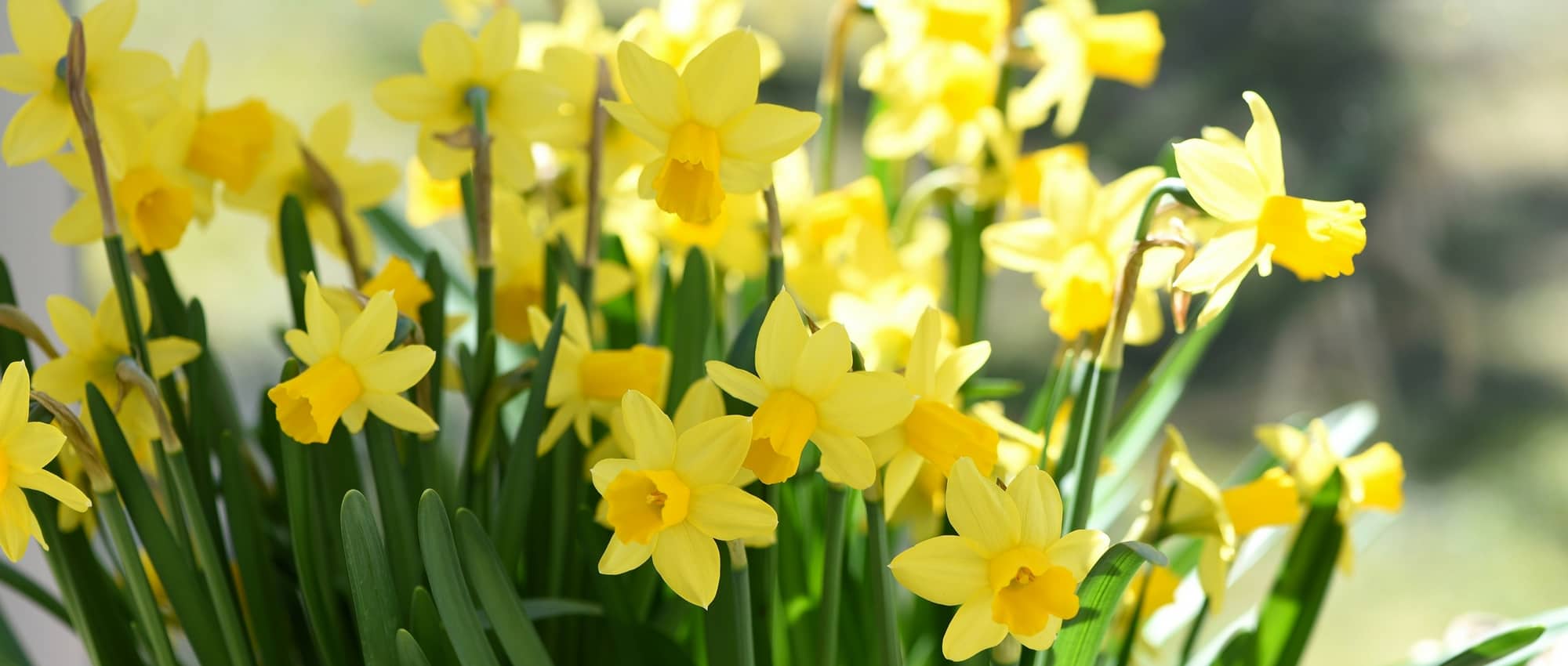
Daffodils or jonquils: planting, growing and care
Contents
Daffodils in a nutshell
- Daffodils offer a bright flowering, yellow or white, sometimes very fragrant!
- They require little maintenance, grow on their own and return every year. They can even naturalise.
- They flower early in spring, sometimes as soon as the end of winter!
- There are hundreds of varieties: small or taller, with single or double flowers… daffodils offer a beautiful diversity!
- Very easy to grow, they are very hardy and suffer from no diseases.
A word from our Expert
If they evoke a character from Greek mythology, the daffodils or jonquils are also stunning bulbous perennial plants with yellow or white spring flowering. Their bright colours are perfect for waking up the garden after winter and signalling the arrival of spring! We often think of wild daffodils, such as the wood jonquil or the poet’s daffodil, but there are hundreds of varieties.
Their height varies greatly: mini-daffodils measure only 15 centimetres tall, while large daffodils can reach heights of 40 to 50 cm. The flowers are sometimes simple and natural, easily fitting into a woodland garden or a short grass meadow, while at other times they are very sophisticated, with varieties featuring double flowers or “orchid-like flowers,” bringing elegance and originality to the flower beds! Daffodils are wonderful early flowers for creating bouquets, and many varieties charm us with their pleasant fragrance.
The daffodil is an indestructible bulb capable of growing almost anywhere! It settles well in shaded and damp places, and can even tolerate heavy, clayey soils. Daffodil planting takes place in autumn, and once well established, they naturalise easily. They return year after year, requiring almost no maintenance. Depending on the varieties, they adapt to many situations: in a short grass meadow, as borders, in woodlands, in rockeries, or in pots… it is even possible to force them to enjoy flowering in the middle of winter!
Botany
Botanical data
- Latin name Narcissus sp.
- Family Amaryllidaceae
- Common name Daffodil, Jonquil
- Flowering spring
- Height between 15 and 40 cm
- Exposure sun or partial shade
- Soil type any type of soil, even clayey
- Hardiness most are hardy at least down to -15 °C
Daffodils are perennial bulbous plants, native to the Mediterranean region: Europe, North Africa, and the Middle East. A few species also grow in Asia. In the wild in France, one can find the Poet’s Daffodil (Narcissus poeticus), Narcissus bulbocodium, or the wood jonquil (Narcissus pseudonarcissus). The latter grows in meadows and forests, where it sometimes forms quite dense stands. It is particularly abundant in Alsace and the Vosges.
Daffodils belong to the Amaryllidaceae family, which includes over 2,000 species of predominantly bulbous plants. Many commonly cultivated plants can be found here, such as Amaryllis, Alliums, Snowdrops, or Agapanthus.
There are nearly a hundred species of daffodils. However, they have been extensively hybridised, resulting in thousands of varieties. Today, they are so numerous that the Royal Horticultural Society has divided them into 13 groups based on flower shape, crown, or their relation to a species (tazetta daffodils, triandrus daffodils, etc.).
Etymologically, Narcissus comes from the Greek narkao (ναρκάω), which means to numb, to be drowsy, to sleep, as the bulb has narcotic properties.
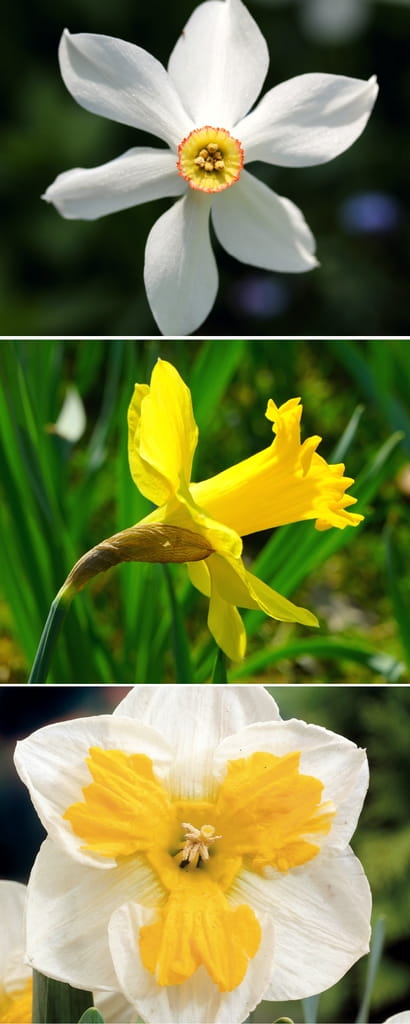
Narcissus poeticus (photo Björn S.), Narcissus pseudonarcissus and Narcissus ‘Tricollet’
It is generally considered that jonquils are daffodils with yellow, solitary flowers, featuring a long central crown (trumpet), such as Narcissus pseudonarcissus. However, from a botanical perspective, the “true” jonquil is Narcissus jonquilla. It gets its name from its fine leaves that resemble the stems of rushes (Juncus). This jonquil is quite rare in gardens.
Daffodils are very hardy plants. They actually require a period of cold before they can bloom in spring. The least hardy seem to be Narcissus tazetta, and some varieties like Narcissus bulbocodium ‘Cantabricus’ (hardy down to –10 °C).
Daffodils form an upright tuft, from which hollow flower stems and fine, straight leaves emerge. The height of daffodils varies: the smallest varieties measure only 10 or 15 centimetres in height (Narcissus bulbocodium…), while the tallest can reach up to 50 centimetres!
Depending on the varieties, the flowering period extends from late winter to late spring. The earliest daffodils can bloom as early as February, while the latest will flower from late April to early May. The flowering does not last very long, at most up to two weeks. In the wild, a few species bloom in autumn, such as Narcissus serotinus. It is also possible to force the bulbs to bloom in winter.
The flowers can be solitary, as in Narcissus pseudonarcissus, with a single flower per flower stem, but they can also be grouped, forming small bouquets. Thus, in Narcissus tazetta, the flower stalks can bear up to 15 or 20 flowers!
The flowers consist of six tepals (three sepals and three petals, which look the same), and bear a crown in the centre, shaped like a more or less flared tube. This crown is sometimes short, but often well-developed and quite long. It is generally coloured in a brighter shade than the petals. In some varieties, it is split, giving the impression of having a second row of petals (as in the daffodils ‘Trepolo’ or ‘Tripartite’). In the centre, inside the crown, the flower has six stamens, except for Narcissus triandrus, which has only three.
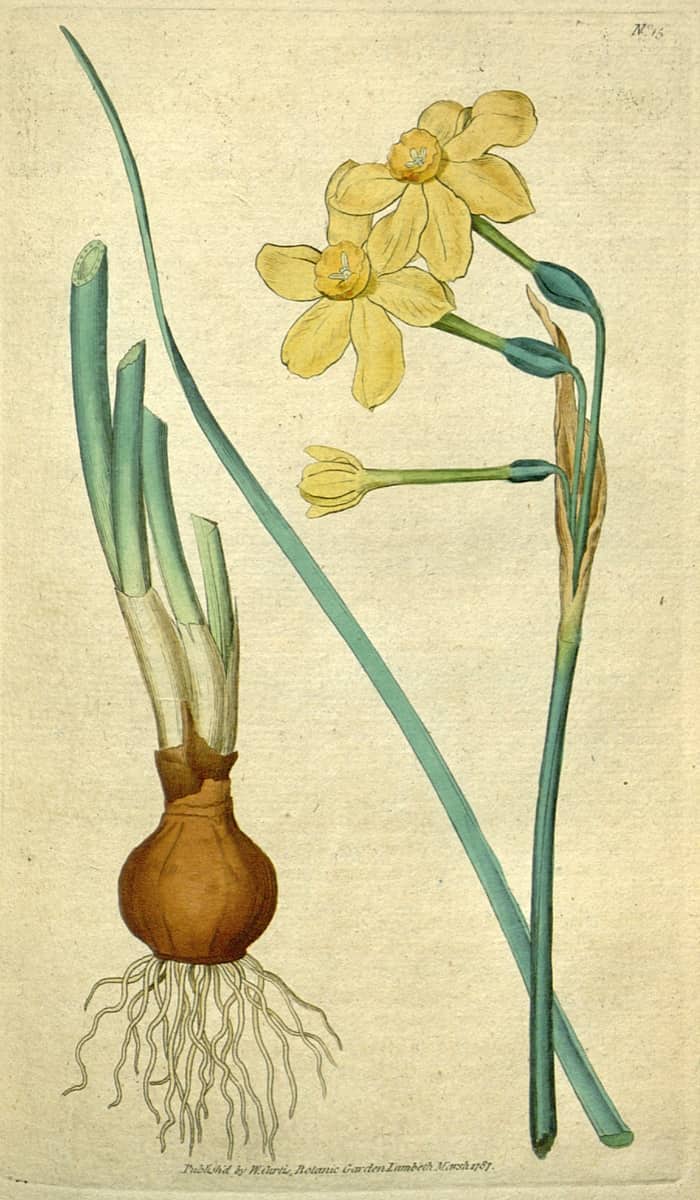
Narcissus jonquilla: botanical plate
The flowers can be solid, entirely white or entirely yellow, but they are often bicoloured, with white or yellow tepals and a crown of a brighter colour (bright yellow or orange). The flowers can also be marked with pink or red. There is even a daffodil with green flowers: Narcissus viridiflorus!
The flowers are often single, giving them a rather natural appearance, but there are also double-flowered varieties, and even “orchid-like” varieties with a sophisticated appearance. The flowers of Narcissus bulbocodium are very original, with a large trumpet crown surrounded by very fine tepals. The sizes of daffodil flowers vary greatly: those of Narcissus bulbocodium or Narcissus tazetta often measure 2 or 3 centimetres in diameter, while the flowers of some varieties like Narcissus ‘Obdam’ can exceed 10 centimetres in diameter!
Daffodils sometimes offer very fragrant blooms! This is the case for the Poet’s Daffodil (Narcissus poeticus), tazetta daffodils, and certain varieties like Narcissus ‘Fragrant Rose’ or Narcissus ‘Geranium’.
Botanical daffodils are appreciated for their very natural and wild appearance. Moreover, they generally naturalise quite well!
The leaves of daffodils are linear, elongated, and fine. They emerge from the base of the tuft and stand upright towards the sky. They are often blue-green, glaucous, and can also be bright green. They can measure up to 70 centimetres in length. Generally, the longest leaves reach the height of the flowers, sometimes exceeding them. The true jonquil, Narcissus jonquilla, which is rare in cultivation, is distinguished by its extremely fine leaves that resemble rush stems, which is how it got its name.
Daffodils have bulbs located about ten centimetres below the soil surface. They allow the plant to store nutrients to survive the bad season and bloom again in spring. After flowering, at the end of spring, the leaves wither, and the plant enters dormancy again. Over the years, the bulbs grow and divide, producing new small bulbs that allow the plant to multiply.
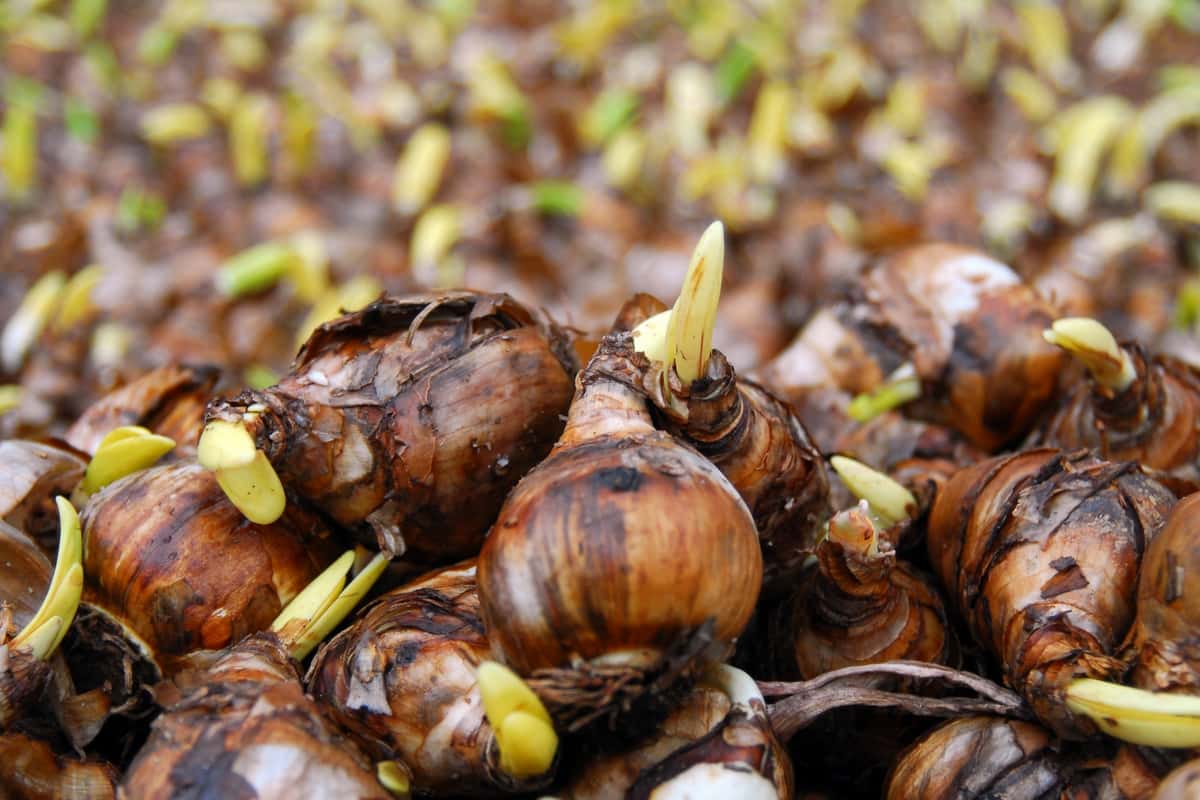
The bulbs of daffodils (photo iBulb – Wouter Koppen)
The fruit of daffodils is a three-chambered capsule containing small, round black seeds. These seeds require a period of cold to germinate in spring.
They are ideal plants for making bouquets! Daffodils can last up to two weeks in a vase. Due to the toxicity of the sap, we advise against mixing them with other flowers in a vase, as they may cause them to wilt faster. Otherwise, you will need to change the water daily to better preserve your bouquet.

The fruits and seeds of Daffodils (photo Muséum de Toulouse – Roger Culos)
Botanical species:
- Narcissus pseudonarcissus
The yellow daffodil, often called jonquil, bears solitary flowers with soft yellow petals and a large crown in the centre, of a brighter yellow. It blooms early, in March, and naturalises easily.
- Narcissus jonquilla
This is the true jonquil, with yellow flowers and a large central crown. It is native to Spain and Portugal and gets its name from its very fine foliage, shaped like rush leaves.
- Narcissus poeticus
The Poet’s Daffodil bears solitary white flowers from April, with a small crown marked by a red edge. A very elegant and fragrant bloom!
- Narcissus tazetta
A superb daffodil, whose early flowering sometimes occurs as early as the end of winter. Its inflorescences group up to 15 or 20 small fragrant flowers, with white petals and a small yellow crown in the centre.
Read also
Narcissus or daffodil: planting and careThe main varieties of daffodils
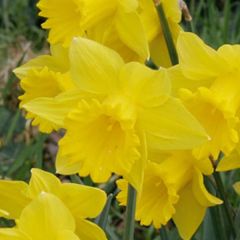
Narcissus 'Dutch Master'
- Flowering time May
- Height at maturity 45 cm
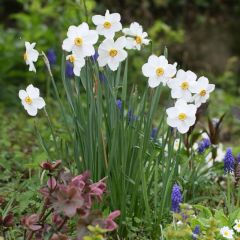
Narcissus poeticus Actaea
- Flowering time May, June
- Height at maturity 40 cm

Narcissus Obdam
- Flowering time May, June
- Height at maturity 40 cm
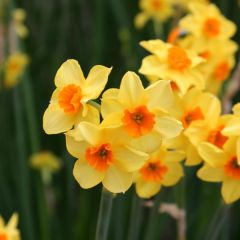
Narcissus x jonquilla Martinette
- Flowering time April, May
- Height at maturity 40 cm
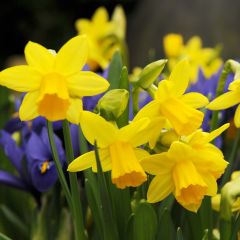
Narcissus cyclamineus Tête-à-tête
- Flowering time March to June
- Height at maturity 25 cm
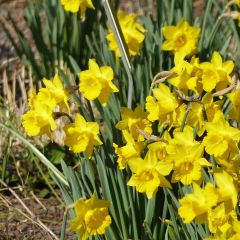
Narcissus pseudonarcissus obvallaris
- Flowering time May
- Height at maturity 25 cm
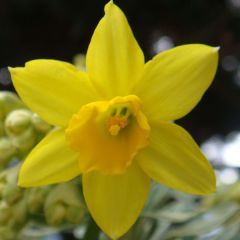
Narcissus cyclamineus February Gold
- Flowering time March, April
- Height at maturity 25 cm
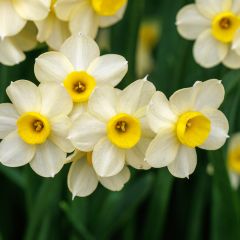
Narcissus Minnow
- Flowering time April, May
- Height at maturity 20 cm
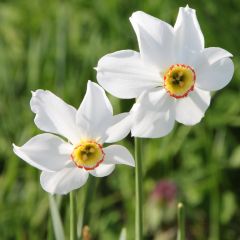
Narcissus poeticus recurvus - Daffodil
- Flowering time May, June
- Height at maturity 40 cm
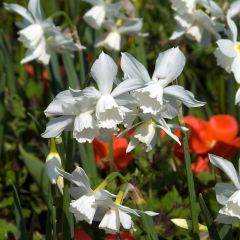
Narcissus triandrus Thalia - Daffodil
- Flowering time May, June
- Height at maturity 35 cm
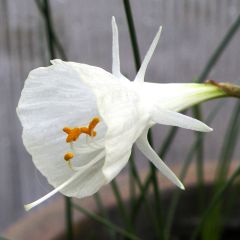
Narcissus x bulbocodium cantabricus
- Height at maturity 10 cm
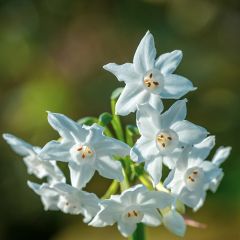
Narcissus papyraceus Paperwhite
- Height at maturity 40 cm
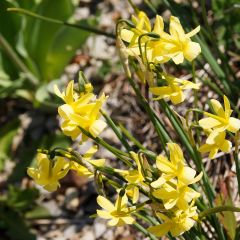
Narcissus triandrus Hawera - Daffodil
- Flowering time May, June
- Height at maturity 25 cm
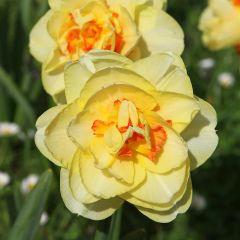
Narcissus Tahiti
- Flowering time May, June
- Height at maturity 40 cm
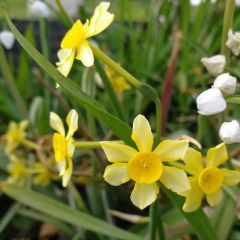
Narcissus New Baby
- Flowering time May, June
- Height at maturity 25 cm
To make the right choice, discover our advice sheet: “Which daffodil or jonquil to choose”
Discover other Narcissi - Daffodils
View all →Available in 1 sizes
Available in 1 sizes
Available in 1 sizes
Available in 1 sizes
Available in 1 sizes
Available in 1 sizes
Available in 1 sizes
Available in 1 sizes
Available in 1 sizes
Available in 1 sizes
Planting
Where to plant daffodils?
Install your daffodils in full sun or partial shade. Too dense shade can limit flowering, but they will thrive at the base of deciduous trees or bushes. Daffodils grow easily almost anywhere and even tolerate heavy or clay soils! However, some species like Narcissus tazetta and Narcissus triandrus prefer well-drained ground. The smaller varieties are suitable for rock garden planting.
We recommend grouping them to create small clumps rather than isolating them. You can also plant them randomly, for example by tossing them and planting them where they fall. Feel free to plant them in mass in a short grass meadow… The effect in spring will be spectacular when it is covered with a multitude of yellow or white flowers! Once well established, daffodils can naturalise and return year after year without requiring any maintenance.
You can also plant daffodils in pots or containers, possibly combining them with other bulbs, such as hyacinths, muscari, or tulips. They can be forced to provide winter flowering.
When to plant them?
Plant them in autumn, ideally from September to early November. Early planting will allow the bulb to flower early in spring. However, it is still possible to plant them until December.
How to plant daffodils?
We recommend maintaining a distance of about ten centimetres between each bulb to give them space to develop properly.
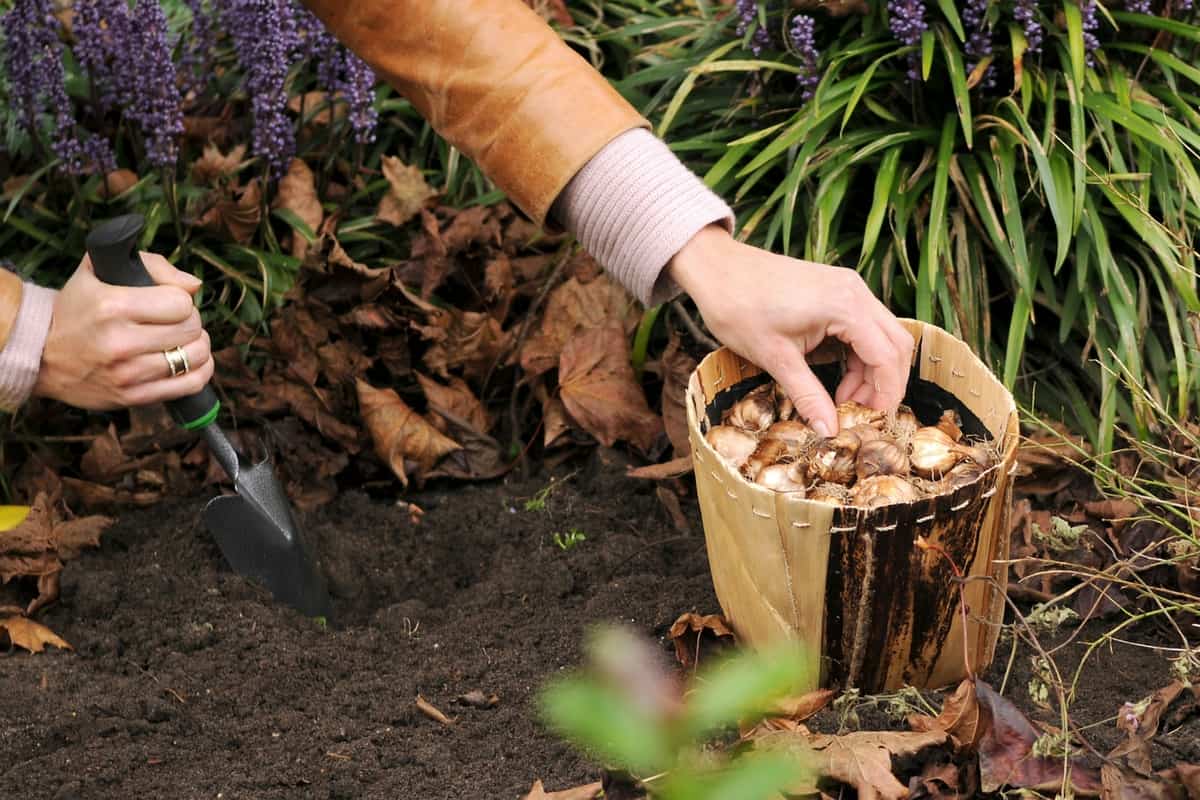
Planting daffodils (photo iBulb – Wouter Koppen)
- Dig a hole about three times the height of the bulb (generally between 10 and 15 centimetres deep). You can use a bulb planter.
- Place the bulb with the point facing upwards.
- Cover with soil.
- Gently firm down.
- Water.
Also, check out our video tips – Planting daffodil bulbs:
And to learn everything about planting daffodils, check out our advice sheet: “Daffodil or Jonquil – planting and care”
Also discover “Planting and caring for daffodil bulbs in pots”
Care
Daffodils require almost no maintenance! Unlike other bulbs, they are spared from rodents as they are toxic (thus, when mixed with tulips, they will protect them!). After flowering, you should leave the leaves in place until they are completely dry. The plant replenishes its reserves: mowing the short grass meadow while the leaves are still green could compromise the flowering of the following year.
After flowering, it is advisable to remove the faded flowers for aesthetic reasons and to avoid unnecessarily exhausting the plant. You can also apply a potassium-rich fertiliser that is low in nitrogen.
→ Read also: How to care for daffodils after flowering?
Daffodils do not need to be watered in summer; on the contrary, they need to remain dry while they are in dormancy. However, during spring, late varieties will appreciate being watered if the weather is dry.
You can divide daffodils every three to four years to aerate and rejuvenate the clumps. This will encourage flowering and prevent your bulbs from becoming exhausted. It is best to do this in early summer when the plant has entered dormancy.
Slugs sometimes nibble on the petals of daffodils! You can protect them by spreading wood chips around your bulbs to create a barrier, or by planting nearby plants that repel them: thyme, wormwood, etc. It can also happen that the larvae of the Daffodil Fly (Merodon equestris) burrow into the bulbs.
Multiplication
We recommend multiplying your daffodils by dividing clumps. It is also possible to sow them, but this technique should be reserved for botanical species, and you will need to wait at least three to four years before seeing them flower.
Dividing Clumps
You can divide your clumps of daffodils every four years, at the beginning of summer, when the foliage is completely yellow and the plant has entered dormancy.
- Dig up the clump with a fork to extract the bulbs, taking care not to damage them.
- Remove any excess soil if necessary.
- Divide the bulbs by hand and gently untangle their roots.
- Replant them immediately: dig and place the bulbs at a depth of three times their height.
- Cover with soil and firm down.
It is important not to wait to replant the bulblets. They should not remain out of the ground for too long to avoid drying out.
And to really learn everything about their planting, discover our planting guide: “Daffodil or Jonquil: Planting and Care”
→ Also discover how to multiply bulbs by scaling in our tutorial!
Association
Daffodils create a stunning effect when planted in masses in a short grass meadow! The meadow then becomes covered in white or yellow flowers in spring. You can let them naturalise. Whether in a short grass meadow, as a border, or in pots, we recommend pairing daffodils with other spring bulbs: tulips, muscari, hyacinths, fritillaries… In a flowerbed, you can add some perennials, such as the elegant Bleeding Hearts. The smaller varieties of daffodils, particularly Narcissus tazetta, are suitable for planting in rockeries. They will complement houseleeks, sedums, carnations, or grasses.

Tulipa ‘Cairo’ (photo iBulb – Wouter Koppen) – Fritillaria meleagris – Tulips and Narcissus ‘Geranium’ (photo iBulb – Steven Bemelman) – Narcissus pseudonarcissus
Daffodils thrive when planted at the base of deciduous trees or bushes. For example, you can time their flowering with that of flowering cherries or forsythias. Also, take advantage of decorative barks, such as those of Cornus sanguinea or Cornus alba.
You can create very elegant flowerbeds using only white flowers, for example by pairing Narcissus ‘Mount Hound’ with tulips ‘Concerto’, hyacinths ‘Carnegie’, and anemones ‘The Bride’. But don’t hesitate to play with contrasts: use the light blooms of daffodils to highlight deeper shades, such as the deep blue of Iris reticulata or the dark hue of Fritillaria persica!
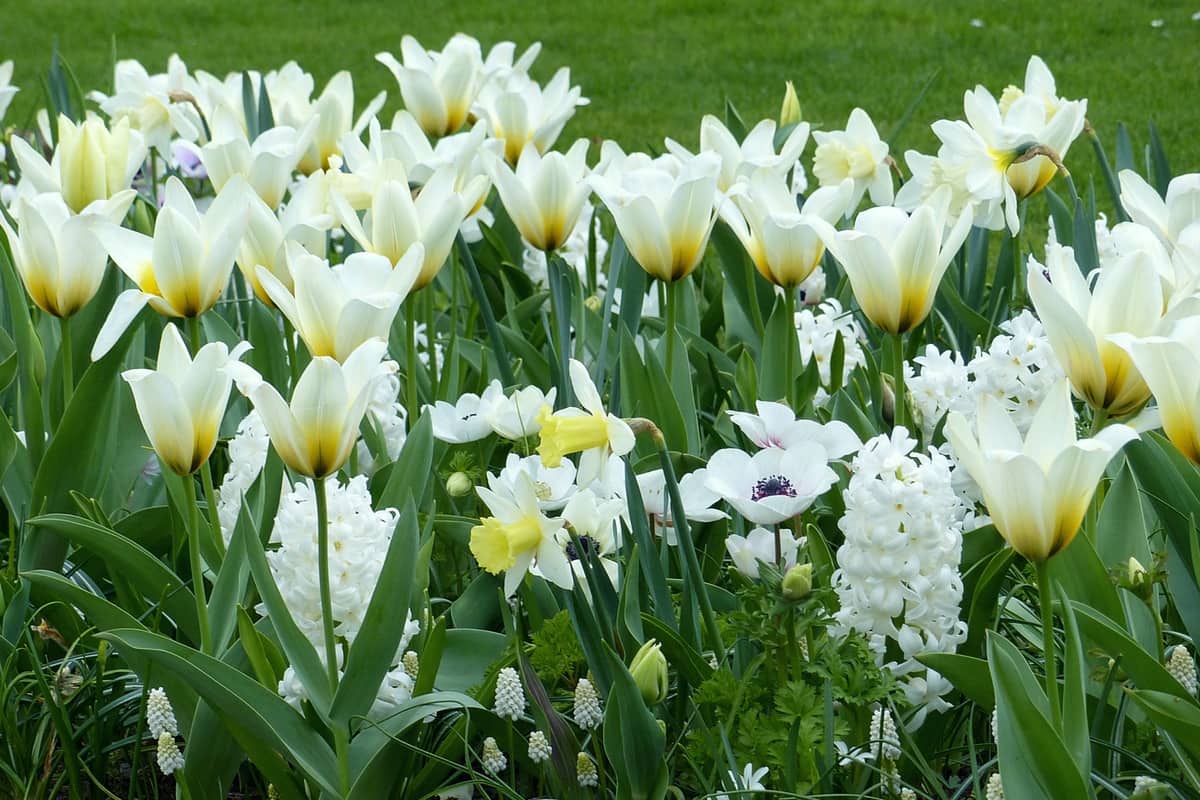
A lovely combination of white flowers with daffodils ‘Mount Hood’, tulips ‘Concerto’, hyacinths ‘Carnegie’, muscari ‘White Magic’, and anemones ‘The Bride’
Need a bit more inspiration? Check out our association guide: “Daffodil or Jonquil: 8 Ideas for Combinations”
Did you know?
- Narcissus in Greek Mythology
In Greek mythology, Narcissus was a handsome and proud young man. He rejected the advances of the nymph Echo, who then made a request to Nemesis, the goddess of Vengeance. It was then that Narcissus, upon seeing his reflection in the water, fell in love with it: he became unable to turn away. Fascinated, he drowned in it and was transformed into the plant that now bears his name.
This myth gave rise to the term narcissism.
- Must-visit: a collection of narcissi!
Located in Granges-sur-Vologne, in the Vosges, the Berchigranges garden houses an exceptional collection of narcissi, gathering around 650 species and varieties. A great idea for a visit, to be done in April-May!
- The Daffodil Festival
The Daffodil Festival takes place every two years in Gérardmer in the Vosges, at the beginning of spring, in April. Floats parade through the town, decorated with a multitude of daffodils (Narcissus pseudonarcissus, which grows abundantly in the region).
Useful resources
- Our Depth Guide for Spring Bulbs
- The most beautiful range of Daffodils is with us!
- The Berchigranges garden, in the Vosges, has an exceptional collection of daffodils!
- Another article on our blog: Top 15 Daffodils from My Garden
- Advice sheet: Which bulbs to grow indoors?
- Advice sheet: Bulb Size: Understanding to Choose Better
- Advice sheets: 6 bulbs to naturalise in the garden, the best daffodils to naturalise in the garden, Botanical Daffodils: How to Choose and Combine Them
- Daffodils by colour: 5 varieties of white-flowered daffodils, 7 bicoloured daffodils to have in your garden, 7 yellow-flowered daffodils to celebrate spring
- Double-flowered daffodils
- Daffodils in bouquets with an article by Pierre on our blog: Gather Bouquets of Daffodils!, one by Virginie: 5 Tips for Making Beautiful Daffodil Bouquets and one by Olivier with A Daffodil Bouquet for €0.50!
- Our advice sheet: Why Aren’t My Daffodils Flowering?
- Find our article on the best orchid-flowered daffodils to brighten your garden.
Frequently asked questions
-
The flowering is over, can I cut the foliage?
After flowering, the bulb replenishes its reserves before entering dormancy. You must wait until the foliage is completely dry, and definitely do not cut it before then, as this could compromise next year's flowering. Wait a few weeks before mowing!
-
My daffodils are exhausting, they are producing fewer flowers!
We recommend dividing your daffodils every three to four years at the end of summer to rejuvenate the clumps. Over time, these can become too dense, which limits flowering. Don't hesitate to add some potassium-rich fertiliser at the end of spring, as soon as flowering is finished. This will help the bulb to replenish its reserves, ensuring better flowering the following year.
-
My daffodils are no longer flowering! What should I do?
Several reasons can explain the absence of flowers on daffodils. If you mowed too early after flowering and cut the leaves before they had dried, the bulb may not have been able to replenish its reserves, making it difficult to flower again this year. It is also possible that the culprit is the daffodil fly, whose larvae burrow into the bulb. Finally, flowering can sometimes be hindered by a lack of light: if your daffodils are planted in too dense a shade, consider moving them to a sunnier spot.
-
Should I dig up my daffodils in autumn to protect them from winter?
No, daffodils are quite hardy; there is no need to winter them. They are not even afraid of rodents. They would prefer to stay in the ground, which will prevent them from drying out.
-
The petals of my daffodils are damaged!
The culprits are slugs, which love to nibble on flowers! To deter them, you can plant thyme nearby or create a barrier with wood chips.
- Subscribe!
- Contents































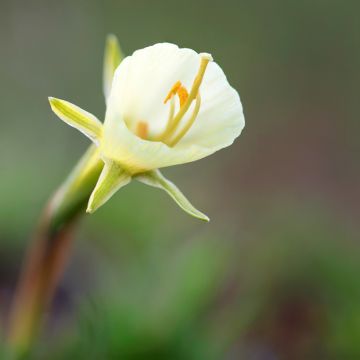
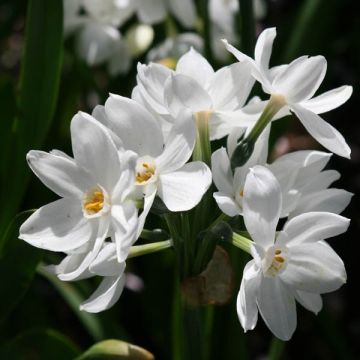
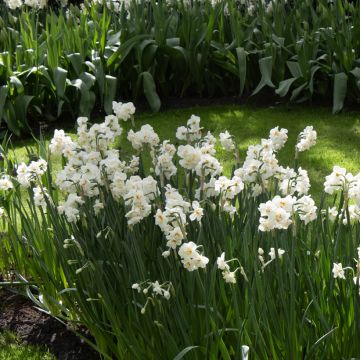

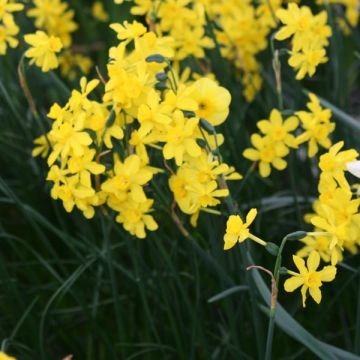


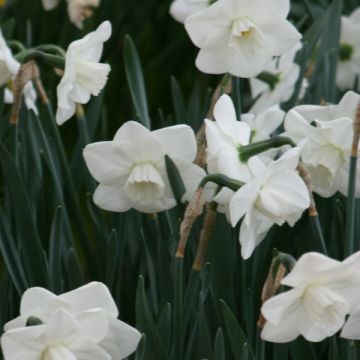


Comments